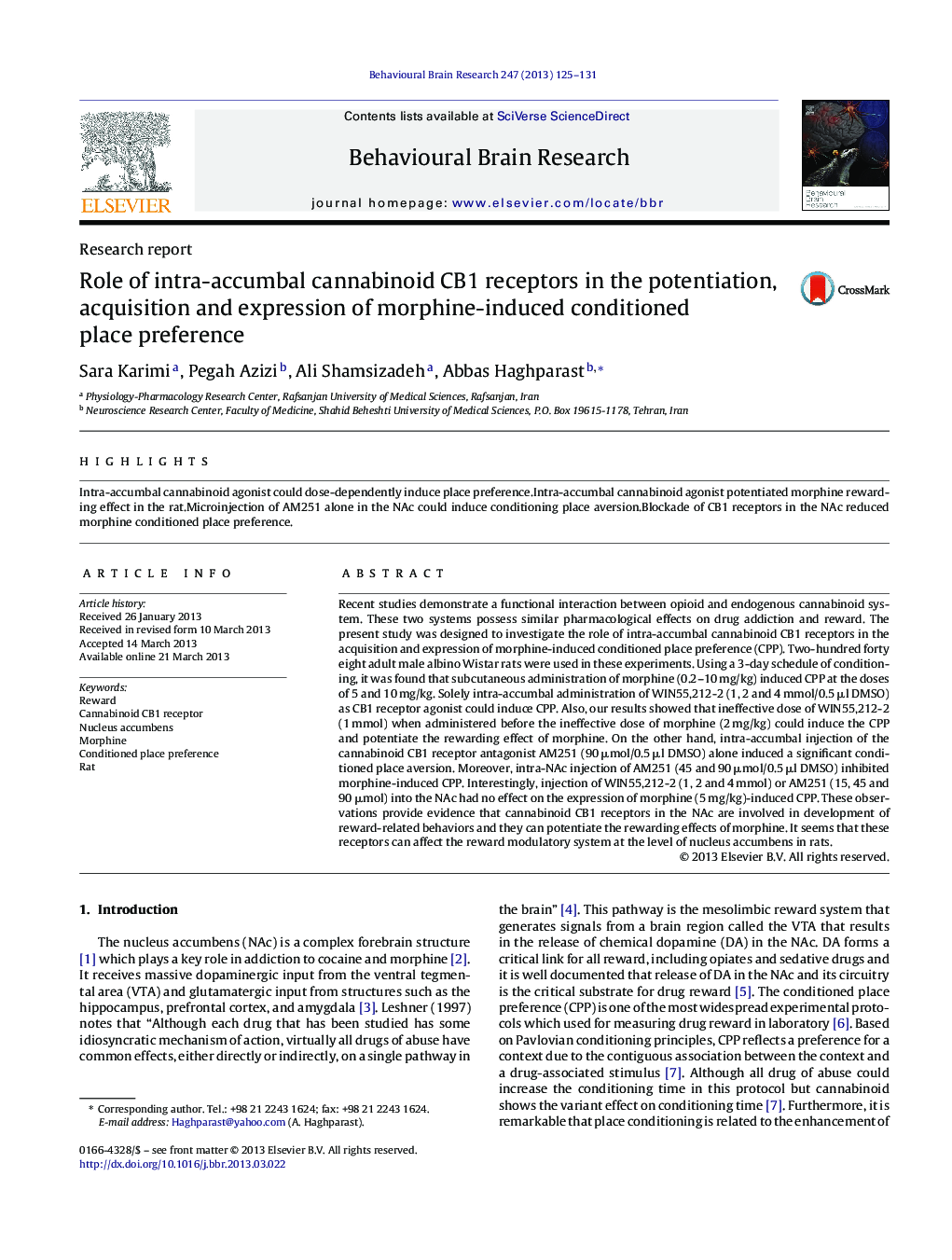| کد مقاله | کد نشریه | سال انتشار | مقاله انگلیسی | نسخه تمام متن |
|---|---|---|---|---|
| 4312675 | 1612985 | 2013 | 7 صفحه PDF | دانلود رایگان |

Intra-accumbal cannabinoid agonist could dose-dependently induce place preference.Intra-accumbal cannabinoid agonist potentiated morphine rewarding effect in the rat.Microinjection of AM251 alone in the NAc could induce conditioning place aversion.Blockade of CB1 receptors in the NAc reduced morphine conditioned place preference.
Recent studies demonstrate a functional interaction between opioid and endogenous cannabinoid system. These two systems possess similar pharmacological effects on drug addiction and reward. The present study was designed to investigate the role of intra-accumbal cannabinoid CB1 receptors in the acquisition and expression of morphine-induced conditioned place preference (CPP). Two-hundred forty eight adult male albino Wistar rats were used in these experiments. Using a 3-day schedule of conditioning, it was found that subcutaneous administration of morphine (0.2–10 mg/kg) induced CPP at the doses of 5 and 10 mg/kg. Solely intra-accumbal administration of WIN55,212-2 (1, 2 and 4 mmol/0.5 μl DMSO) as CB1 receptor agonist could induce CPP. Also, our results showed that ineffective dose of WIN55,212-2 (1 mmol) when administered before the ineffective dose of morphine (2 mg/kg) could induce the CPP and potentiate the rewarding effect of morphine. On the other hand, intra-accumbal injection of the cannabinoid CB1 receptor antagonist AM251 (90 μmol/0.5 μl DMSO) alone induced a significant conditioned place aversion. Moreover, intra-NAc injection of AM251 (45 and 90 μmol/0.5 μl DMSO) inhibited morphine-induced CPP. Interestingly, injection of WIN55,212-2 (1, 2 and 4 mmol) or AM251 (15, 45 and 90 μmol) into the NAc had no effect on the expression of morphine (5 mg/kg)-induced CPP. These observations provide evidence that cannabinoid CB1 receptors in the NAc are involved in development of reward-related behaviors and they can potentiate the rewarding effects of morphine. It seems that these receptors can affect the reward modulatory system at the level of nucleus accumbens in rats.
Journal: Behavioural Brain Research - Volume 247, 15 June 2013, Pages 125–131